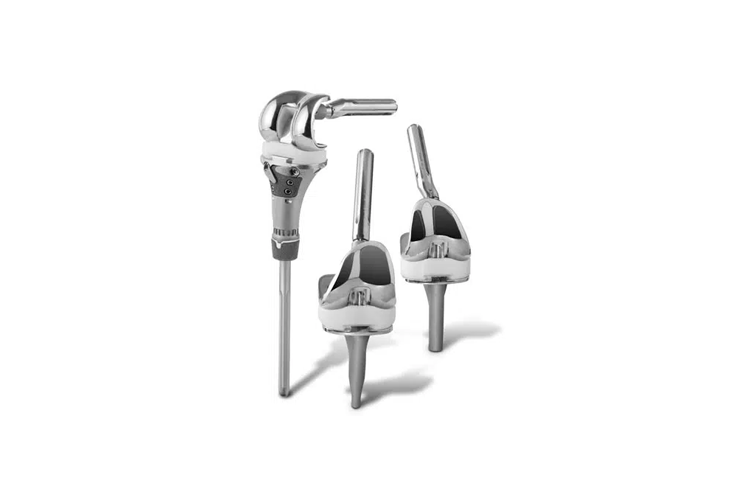
Revision Knee Replacement – Understanding the Differences Between Primary and Revision Surgery
When it comes to knee replacement surgery, not all patients respond the same way. Some may have a great outcome from their primary knee surgery, but others may need to undergo revision surgery afterwards due to complications or unanticipated issues that arose as a result of the procedure. If you have already undergone a primary knee replacement and are now experiencing pain or other complications that make it necessary for you to get another surgery, this is called revision knee surgery or revision arthroplasty. While most people who undergo revision knee surgery do so because their original surgeon didn’t achieve satisfactory results. In this blog post, we will look at the differences between primary and revision knee replacement surgeries and give you some tips on how to choose the right surgeon should you need one in future.
What is a revision knee replacement?
A revision knee replacement is surgery to replace the original knee joint after the first knee replacement failed to give the desired results. This surgery is sometimes also known as a second knee replacement or a revision knee arthroplasty. Before scheduling a revision surgery, your doctor will determine if the failure of your knee joint is due to an infection, a reaction to the implant, or a fracture in the knee. If the failure is due to an infection in the knee joint, your doctor will first treat the infection so that you can walk again. If the failure is due to some other factor, the doctor may suggest a revision knee surgery for a better outcome.
How common are revision knee surgeries?
The problem with knees is that they tend to get worn down over time. There are many different reasons for this, but one of the most common is that people don’t use their knees properly.
When a knee becomes worn down from overuse, it can start to develop problems, including pain and arthritis. In some cases, when the knee is damaged enough, it may need to be replaced with an artificial joint.
If you have a knee problem, you should see your doctor as soon as possible so that they can evaluate your condition and determine what the best course of action is. If you have a torn meniscus or another injury, then surgery may be an option.
If you are in otherwise good shape and only have minor wear on your knees, then it may be best to simply keep up with regular exercise and rest.
The prevalence of revision knee surgery varies across the world depending on the number of arthroplasty surgeries being performed and the number of complications arising from those surgeries. In the United States alone, it’s reported that the number of knee replacement surgeries conducted on an annual basis has grown by more than 30% over the last decade. While the number of primary knee surgeries is rising, the number of revision surgery has increased at a much higher rate. In fact, the number of revision surgeries performed has increased by over 90% in that period. This is largely due to the fact that surgeons are now more aware of the risks and complications associated with this procedure and are better prepared to deal with them.
What are the reasons for revision knee surgery?
The knee joint is the most heavily used joint in the body. The main function of the knee is to allow for forward and backward motion. The knee also helps with walking, running, jumping, and sitting. Because of its importance, the knee is susceptible to injury. There are many causes of a knee injury, including trauma, overuse, and arthritis. Injury can damage the cartilage that covers the ends of the bones in the knee, as well as other tissues in the joint. Over time, this damage can cause pain and limit your ability to move. Revision surgery is a procedure that aims to improve your knee health by removing damaged or damaged cartilage or bone that has been causing pain or problems. Revision surgery may be performed to repair a torn meniscus (a piece of cartilage that acts as a cushion between your shinbone and thighbone), remove loose particles from your joint surface (called osteochondritis), or address other issues that may be causing pain or affecting your mobility.
There are many reasons why primary knee surgery may need to be followed by a revision arthroplasty. Some of the most common reasons are related to the patient’s own health and anatomy, such as pre-existing health conditions, improper alignment of the knee joint, or a knee that is too narrow for the implant. The surgeon may make a mistake in the procedure and cause damage to tissues and the knee joint that will require the surgeon to correct it. Complications after surgery including infection, blood clots, and failure of the implant to integrate with the knee joint can also lead to revision surgery. Infections are the most common reason for revision surgeries. According to the Centers for Disease Control and Prevention, every year around 20% of primary knee replacements are infected and need to be replaced with a new knee joint.
Tips on choosing a surgeon to perform your revision surgery
If you’ve already had a knee replacement and are experiencing pain or other issues with your knee, it is possible that you may need to undergo revision surgery. However, it’s important to keep in mind that not all surgeons are experienced with the revision surgery procedure. In order to select the best surgeon for revision knee surgery, it is recommended that you take the following into consideration:
- Your surgeon’s experience
- The surgeon’s reputation
- Your surgeon’s credentials
- Your surgeon’s philosophy on surgery
- The surgeon’s bedside manner
- Location and cost
While you may have had a great experience with your primary surgeon, it’s important to keep in mind that revision surgeries are often more difficult than primary surgeries. Because of this, finding the right surgeon to conduct your revision knee surgery is crucial.
Conclusion
Knee replacements are a common procedure that many people undergo in order to relieve pain and discomfort in the knee joint. However, not all patients respond the same way to the surgery and some may need to get a revision surgery due to complications or unanticipated issues that arose as a result of the procedure. If you’ve already undergone a primary knee replacement and are now experiencing pain or other complications that make it necessary for you to get another surgery, this is called revision knee surgery or revision arthroplasty. While most people who undergo revision knee surgery do so because their original surgeon didn’t achieve satisfactory results.
